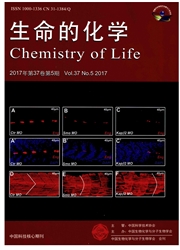

 中文摘要:
中文摘要:
细菌硝基还原酶(nitroreductase,NTR)属于依赖黄素单核苷酸(flavin mononucleotide,FMN)的硝基还原酶超家族,通常以二聚体形式存在。它们可利用还原型烟酰胺腺嘌呤二核苷酸(磷酸)(reduced nicotinamide adenine dinucleotide(phosphate),NAD(P)H)作为电子供体,催化多种外源硝基芳香族、醌类和黄素类化合物的还原反应,在药物的激活和解毒机制中发挥重要的作用。以研究得较为透彻的大肠杆菌NTR为代表,总结了近几年细菌NTR在结构特征、构象变化及催化特性等方面的最新研究进展。最后,对细菌NTR的研究方向进行了展望。
 英文摘要:
英文摘要:
Bacterial nitroreductases (NTRs) belong to FMN-dependent nitroreductase-like superfamily, and are mostly dimeric. They are NAD(P)H-dependent cytosolic enzymes with broad substrate spectrum including quinines, flavins and nitroaromatic compounds, and play important roles in drug activation and detoxication. Taking the well-characterized E.coli NTR NfsB and other bacteria NTR as examples, we summarized the recent research progress on the structural, conformational changes and catalytic properties of NTR. We also discussed the research perspectives in brief.
 同期刊论文项目
同期刊论文项目
 同项目期刊论文
同项目期刊论文
 A Sperm-Plasma beta-N-Acetyl-D-Hexosaminidase Interacting with a Chitinolytic beta-N-Acetyl-D-Hexosa
A Sperm-Plasma beta-N-Acetyl-D-Hexosaminidase Interacting with a Chitinolytic beta-N-Acetyl-D-Hexosa A Modeling Study for Structure Features of beta-N-acetyl-D-hexosaminidase from Ostrinia furnacalis a
A Modeling Study for Structure Features of beta-N-acetyl-D-hexosaminidase from Ostrinia furnacalis a Purification and characterization of a nitroreductase from the soil bacterium Streptomyces mirabilis
Purification and characterization of a nitroreductase from the soil bacterium Streptomyces mirabilis Molecular and Biochemical Characterization of a Novel beta-N-Acetyl-D-Hexosaminidase with Broad Subs
Molecular and Biochemical Characterization of a Novel beta-N-Acetyl-D-Hexosaminidase with Broad Subs Comparative Biochemistry of GH3, GH20 and GH84 beta-N-acetyl-D-hexosaminidases and Recent Progress i
Comparative Biochemistry of GH3, GH20 and GH84 beta-N-acetyl-D-hexosaminidases and Recent Progress i Active-pocket size differentiating insectile from bacterial chitinolytic beta-N-acetyl-D-hexosaminid
Active-pocket size differentiating insectile from bacterial chitinolytic beta-N-acetyl-D-hexosaminid A novel alternative splicing site of class A chitin synthase from the insect Ostrinia furnacalis - g
A novel alternative splicing site of class A chitin synthase from the insect Ostrinia furnacalis - g Development of Unsymmetrical Dyads As Potent Noncarbohydrate-Based Inhibitors against Human beta-N-A
Development of Unsymmetrical Dyads As Potent Noncarbohydrate-Based Inhibitors against Human beta-N-A Cloning, expression and biocharacterization of OfCht5, the chitinase from the insect Ostrinia furnac
Cloning, expression and biocharacterization of OfCht5, the chitinase from the insect Ostrinia furnac Biochemical characterization of a novel beta-N-acetylhexosaminidase from the insect Ostrinia furnaca
Biochemical characterization of a novel beta-N-acetylhexosaminidase from the insect Ostrinia furnaca 期刊信息
期刊信息
